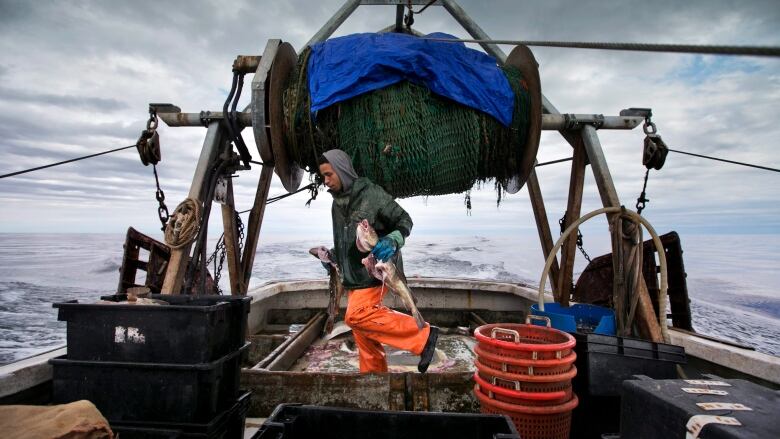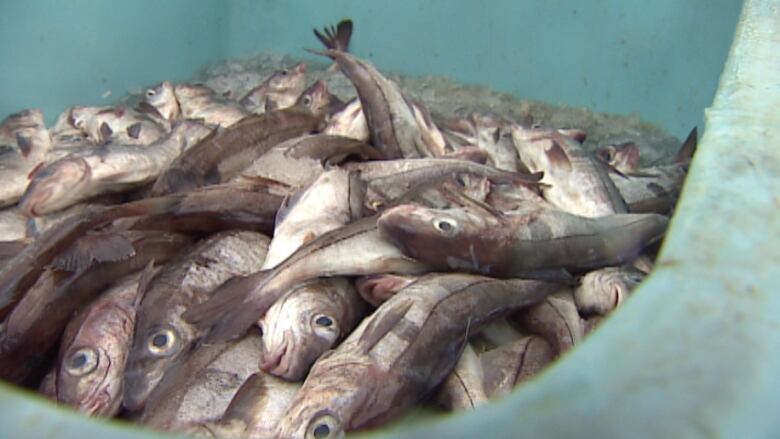Canada, U.S. agree on big haddock, cod quota cuts on Georges Bank
Joint panel recommends 25 per cent cut in haddock quota, 32 per cent cut in cod for 2019

Canada and the United States have agreed to sharply reduce quotas for two key groundfish stocks on their sharedGeorges Bank fishing grounds off southern Nova Scotia.
A joint transboundary government and industry panel is recommending a 25 per cent cut in haddock and a 32 per cent cut for cod in 2019.
Co-chair Alain d'Entremont of Scotia Harvest Inc.in Nova Scotia,says there are concerns the huge numbers of haddock hatched in 2013 did not survive or were overestimated in the first place.
"The original estimates from the 2013 and 2014 science surveys seemed to be overly optimistic compared to the amount offish that have actually reached commercial size and the commercial fishery," he says.
Haddock drives the fishery on Georges Bank
Cod is primarily caught as a bycatch of the haddock and pollockfishery on Georges Bank. The quotas reflect the relative health of cod and haddock.
The proposed total allowable catch in 2019 for haddock is 30,000 tonnes, shared equally between the two countries.
The haddock quota fellto 40,000 tonnes this year from 50,000 tonnes in 2016.

For cod, the quota is 650 tonnes in 2019,with Canada getting a 71 per cent share and the U.S. getting 29 per cent.
"The industry isactive in trying to promote the conservation mindset and moving towards long-term sustainability for these stocks,"says d'Entremont.
What it means to the Nova Scotia economy
It's estimatedabout ninemillion kilogramsof haddock from Georges Bank is landed annually in southwest Nova Scotia. That'sworth about $20 million at the wharf enough to keep processing plants busy and vessels and crews on the water,not to mention money for suppliers.
"That's an important part of the community and supporting the community in southwest Nova Scotia,"says d'Entremont.
A flatlining flatfish
The status report prepared for the Transboundary Management Guidance Committee thatd'Entremont co-chairs also includes details on the steep dive in the Georges Bank population of yellowtail flounder.
The flatfish is also jointly managed bythe two countries.
In 2017, Canada had a quota of 93 tonnes, and Canadian fishermen landed threetonnes. In 2019, the Canadian quota is 34 tonnes.
The report says fishing is not driving the decline in yellowtail.
"If it's not fishing, it must be something else. Is it environment, is it prey, is it predator-prey relationships? All those things come into play," says d'Entremont.
Industry wary of 'unreliable' assessments
In its own report,d'Entremont's management guidance committee says there are "significant concerns" with the three different assessment methods used to evaluate the cod stock.
"Results are becoming unreliable for management and alternative approach is urgently required," the committee report states.
Similar concerns were noted for models used to predict haddock.
D'Entremont says predictions based on models have proven inaccurate when later checked against what actually occurred in the fishery.












_(720p).jpg)


 OFFICIAL HD MUSIC VIDEO.jpg)
.jpg)



























































































